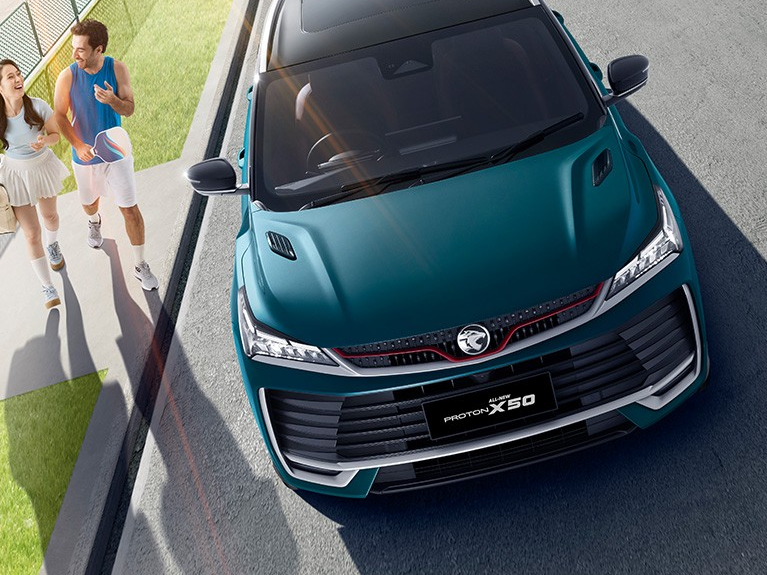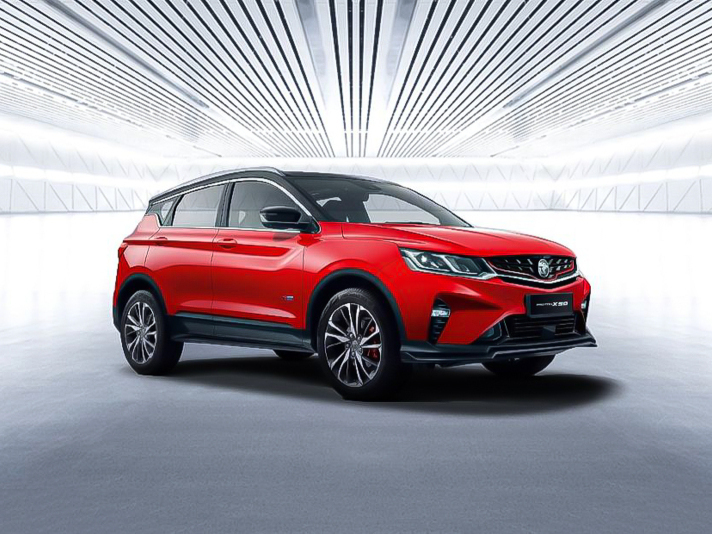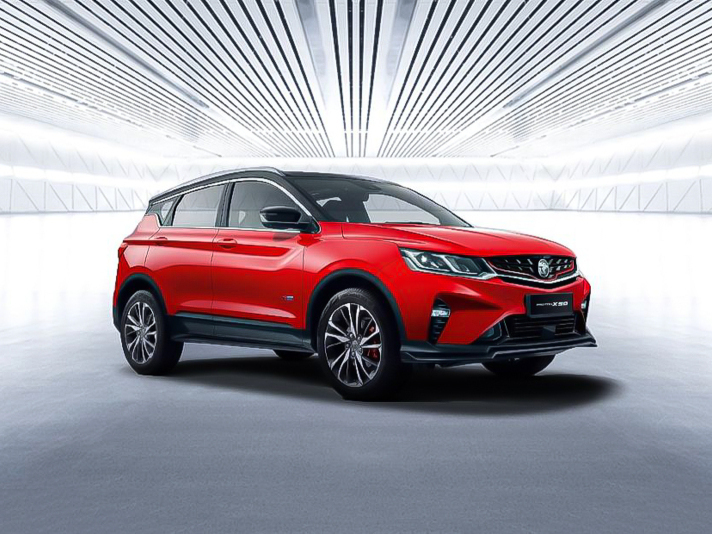Q
how to fix Proton X50 anti-theft authentication failure
If your Proton X50 is throwing up an "anti theft authentication failed" message, it's usually because the vehicle's anti-theft system can't verify properly. Common culprits include a weak key fob battery, signal interference messing with the key, or maybe the system software needing an update. First step? Swap out that key battery and make sure there aren't any electronic devices nearby causing interference. If the problem sticks around, try resetting the system or head to a Proton authorized service center for diagnosis and a software upgrade.
Malaysia's humid weather isn't kind to key batteries—they tend to drain faster here—so regular checks on your battery status can save you from this hassle. It's worth noting the X50's anti-theft system uses RFID tech, right up there with what you'll find in many international brands. It's mature, reliable stuff, so no need to panic if you see this message. A quick fix should get you back on the road. While you're at your regular service appointments, might as well ask the techs to give the anti-theft system a once-over to keep it running smoothly.
Special Disclaimer: This content is published by users and does not represent the views or position of PCauto.
Related Q&A
Q
How much horsepower does the X50 Turbo have?
The Proton X50 Turbo is powered by a 1.5-liter three-cylinder turbocharged engine that cranks out 177 horsepower and a peak torque of 255 Nm. This engine features direct fuel injection and is mated to a 7-speed dual-clutch transmission, delivering pretty impressive performance—especially suited for Malaysian city driving and highway overtaking needs. What's worth noting is that the X50 Turbo's engine is tuned to emphasize low-end torque, so you get that nice, punchy power response in everyday driving, and it's relatively fuel-efficient too. For Malaysian buyers, the X50 Turbo's powertrain setup is pretty competitive in its SUV class, and with local assembly, the price becomes even more appealing. If you're craving more performance, keep an eye on the X50 Flagship variant, which bumps the horsepower up to 181 and comes with a fancier suite of driver assistance systems. Malaysia's hilly terrain and hot climate really put a car's powertrain to the test, but the X50 Turbo's cooling system and transmission tuning have been optimized for these conditions, ensuring reliable long-term use.
Q
How much is Proton X50 in Singapore?
The Proton X50 retails for around SGD 100,000 to SGD 120,000 in Singapore, with the exact price depending on the trim level and dealer promotions. Thanks to Singapore's high car import taxes and Certificate of Entitlement (COE) costs, it's significantly pricier than in Malaysia. For Malaysian buyers, the X50 goes for about MYR 80,000 to MYR 110,000 locally, offering much better value for money.
Under the hood, it's packing a 1.5-liter turbocharged engine that delivers solid power and fuel efficiency—perfect for city driving. If you're planning to buy one in Singapore, make sure to look into the local COE policies and loan options first, since these can really impact the total cost.
Plus, the Proton X50 has a solid reputation in Southeast Asia, especially when it comes to safety features and tech. Definitely worth checking out.
Q
What is the engine of Proton X50?
The Proton X50 is powered by a 1.5-liter turbocharged direct-injection (TGDI) three-cylinder engine, co-developed by Proton and Geely. This engine comes in two tuning versions: the standard variant delivers 150 horsepower and 225 Nm of torque, while the Flagship trim ups the ante to 177 horsepower and 255 Nm. It's mated to a 7-speed dual-clutch transmission (DCT), striking a balance between performance and fuel efficiency.
Under the hood, the engine borrows technology from Geely's BMA modular platform, featuring lightweight construction and direct fuel injection. These advancements help keep fuel consumption in check and ensure compliance with Malaysia's stringent EURO 4 emission standards. A notable point is that Proton has tweaked the engine specifically for local conditions – think a cooling system and ECU calibration optimized to handle our hot and humid weather. Plus, owners can run it on RON 95 petrol, which helps keep day-to-day running costs down.
For Malaysian buyers, small-displacement turbo engines like this have been gaining traction as the market favorite in recent years. Compared to traditional naturally aspirated engines, they deliver more torque at lower revs, making them well-suited for city driving. While three-cylinder setups do involve a slight trade-off in terms of smoothness, the use of a balance shaft has significantly reduced vibration issues. What's more, maintenance costs are on par with those of four-cylinder engines.
Q
Will the X50 facelift have a new engine?
As for whether the facelifted X50 will get a new engine, there's no official word yet. But looking at Proton's usual update strategy, facelifts typically focus more on tweaks to the exterior, interior, and features. The engine is likely to stay the same: the existing 1.5T three-cylinder turbo setup. It's proven itself reliable in the Malaysian market, and with its fuel efficiency plus 147hp/226Nm output, it fits the B-segment SUV bill. If you're craving more power, keep an eye out—Proton might roll out a high-performance variant or a hybrid model down the line. After all, the global trend is going electric, and local brands are also ramping up their new energy tech game. Best bet is to check Proton's official website or local Malaysian auto media for the latest scoop. And a quick tip for car buyers: beyond just power figures, factor in real-world stuff like maintenance costs and after-sales network. At the end of the day, the long-term ownership experience is what really matters.
Q
Which country made Proton X50?
The Proton X50 is a compact SUV co-developed and produced by Malaysian national automaker Proton and China's Geely. Its manufacturing base is located in Tanjung Malim, Perak, Malaysia. Based on Geely's Binyue platform, the model has undergone several localized adaptations for the Malaysian market, including right-hand drive configuration, safety features compliant with local regulations, and an air conditioning system tailored for tropical climates. The Proton X50 is powered by a 1.5-liter turbocharged engine and offers multiple driving modes, balancing performance with fuel efficiency. As a key strategic model for the Proton brand, the X50 has gained popularity among Malaysian consumers thanks to its high value for money and rich technological configuration, such as the advanced driver assistance system (ADAS) and smart connectivity features, further solidifying Proton's competitiveness in the local market. Notably, the collaboration between Proton and Geely has not only enhanced the technical content of the X50 but also driven the upgrading of Malaysia's automotive industry chain, with increasing local production ratios creating more job opportunities and facilitating technology transfer locally.
Q
Is the Proton X50 engine a VOLVO?
The Proton X50's engine isn't directly sourced from Volvo. Instead, it's built based on the modular architecture technology co-developed by Geely and Volvo. Its 1.5-liter three-cylinder turbocharged engine is part of the "Drive-E" powertrain family jointly developed by Geely and Volvo, but Geely took the lead in tuning it to suit Malaysian market needs. This engine incorporates some of Volvo's technical patents, such as direct fuel injection and lightweight design, though the production line and supply chain are independently managed by Geely's system. It's worth adding that the X50's powertrain has undergone local adaptation, including cooling system optimizations for tropical climates and adjustments for RON95 gasoline compatibility, which differ from the calibration of Volvo's original engines. Malaysian owners will notice Geely badges in the X50's engine bay rather than Volvo logos, but the technical origins do reflect the synergy following Geely's acquisition of Volvo. This kind of technology-sharing model is common in the automotive industry – for example, multiple brands under the Volkswagen Group also share engine platforms, which helps reduce R&D costs while ensuring core performance.
Q
Is the X50 a good car to buy?
The Proton X50 is an SUV that Malaysian consumers should definitely consider. It offers solid value for money and competitiveness in the local market. Under the hood, it's powered by a 1.5-liter turbocharged engine, available in two power tunes: the standard variant puts out 150PS, while the performance version cranks it up to 177PS. Both are mated to a 7-speed dual-clutch transmission, delivering smooth power delivery and decent fuel efficiency—perfect for city commutes and long drives alike.
The X50 doesn't skimp on features either. It comes loaded with goodies like Advanced Driver Assistance Systems (ADAS), a panoramic sunroof, a digital instrument cluster, and smart connectivity functions, which really shows Proton's commitment compared to its rivals. Plus, as a homegrown brand, Proton has an edge with its after-sales service network and parts availability, keeping maintenance costs relatively low—something Malaysian buyers definitely care about.
Of course, before making a purchase, it's always a good idea to take it for a test drive to see if the suspension setup and noise insulation meet your personal taste. You might also want to check out competitors like the Honda HR-V or Toyota Corolla Cross, then pick the one that best fits your budget and needs. All in all, the X50 strikes a nice balance between performance, features, and price, making it especially appealing to young families looking for a tech-savvy and practical ride.
Q
What are the common Proton X50 problems?
The Proton X50, a popular B-segment SUV in the Malaysian market, delivers a well-rounded performance overall, though some owners have reported a few common issues. For instance, certain models may exhibit slight jerking from the dual-clutch transmission (DCT) during low-speed driving – a characteristic typical of this transmission type. It’s advisable to stick to regular maintenance and avoid prolonged low-speed creeping to optimize the experience. Additionally, a small number of users have mentioned occasional lag or freezing with the infotainment system, which can be resolved through software updates at official service centers. When it comes to noise insulation, there’s still room for improvement at highway speeds, with tire noise being particularly noticeable; upgrading to quieter tires later might help mitigate this. Notably, the 1.5T three-cylinder engine in the Proton X50 performs better than expected in terms of vibration control, though it’s recommended to keep an eye on engine mount aging after long-term use. The standard Advanced Driver Assistance System (ADAS) has also seen continuous optimization through OTA updates for better local adaptation, so owners should ensure their systems are up to date. Overall, most of these issues are common across the segment, and Proton’s extensive after-sales network – with 140 service centers nationwide – means owners can get support when needed. Regular maintenance and timely software updates go a long way in enhancing the driving experience.
Q
How much is the Proton X50 2024?
The 2024 Proton X50's prices in Malaysia vary by trim level. The entry-level Standard variant starts at around RM86,300, while the top-spec Flagship model goes for approximately RM113,300. Exact pricing may fluctuate slightly depending on optional configurations or promotional offers. As a best-selling SUV from Malaysia's homegrown brand, the Proton X50 is powered by a 1.5-liter turbocharged engine available in two tunes, delivering 150PS and 177PS respectively. It comes packed with advanced driver assistance systems like adaptive cruise control and lane keeping assist, making it a hit among young families and urban commuters for its strong value proposition. It's worth noting that the X50 shares its technical platform with the Geely Binyue but has been localized for Malaysian roads and consumer preferences – the suspension setup, for instance, prioritizes comfort while still maintaining decent fuel efficiency. The warranty package, offering 5 years with unlimited mileage, is another plus for buyers mindful of long-term ownership costs. If you're in the market for a compact SUV, head to an authorized dealer for a test drive. It's also a good idea to compare it with segment rivals like the Perodua Ativa or Honda HR-V to pick the one that best fits your budget and needs.
Q
What is the fuel consumption of the X50 2025?
Let's talk about the 2025 Proton X50's fuel efficiency. Official figures tell us the 1.5T Standard variant sips around 6.4 liters per 100km in mixed driving, while the 1.5T Flagship nudges up slightly to about 6.7L/100km. Of course, real-world numbers can vary a bit depending on how you drive, the roads you take, and how much you're carrying.
Under the hood, that 1.5-liter turbo engine paired with the 7-speed dual-clutch gearbox does a solid job on fuel economy – it's well-suited for both Malaysian city commutes and highway stretches. If you're keen to squeeze even more km out of each liter, stick to smooth driving habits: avoid jackrabbit starts and sudden stops. Regular maintenance helps too – keeping an eye on tire pressure and swapping out the air filter when needed are simple tweaks that can really boost efficiency.
What's impressive is how this B-segment SUV strikes a nice balance between fuel sipping and performance. It's no wonder the X50 remains a top pick for Malaysian buyers who want something that's easy on the wallet and practical for daily use.
Popular Cars
Model Year
Car Compare
Car Photo
Latest Q&A
Q
How much did a new 2018 beetle cost?
The 2018 Volkswagen Beetle had a starting price range of approximately RM120,000 to RM180,000, depending on the trim and options. The entry-level 1.2 TSI Design model was the most affordable, while the top-spec 2.0 TSI R-Line version approached RM180,000—though final pricing could vary with optional extras and dealer promotions.
As a timeless classic, the 2018 Beetle kept its retro charm but packed modern tech like a touchscreen infotainment system and active safety features. Under the hood, buyers could choose between the fuel-efficient 1.2T or the more spirited 2.0T engine.
Fair warning: Volkswagen discontinued the Beetle in 2019, so you’ll only find it on the used market now. That said, its iconic design and nostalgic appeal still make it a hit among collectors. If you’re eyeing a pre-owned model, always check the vehicle history and maintenance records to snag a solid deal.
Q
What engine does a 2018 VW Beetle have?
The 2018 Volkswagen Beetle offered two gasoline engine options across different markets. The primary powerplant was a 1.2-liter TSI turbocharged inline-four, delivering 105 horsepower and 175 Nm of torque, paired with a 7-speed DSG dual-clutch transmission. This compact forced-induction engine struck a balance between urban fuel efficiency and strong low-end torque.
Higher-spec variants featured an optional 1.4-liter TSI turbocharged unit, bumping output to 150 horsepower. Both engines adopted direct fuel injection and belonged to VW’s widely used EA211 modular family, featuring modern tech like lightweight aluminum blocks.
Though retaining its iconic silhouette, this generation Beetle actually shared its underpinnings with the Golf, inheriting the brand’s proven front-wheel-drive architecture. This platform commonality also translated to easier maintenance, as local dealerships were well-versed in servicing these powertrains thanks to extensive parts sharing across VW’s lineup.
Q
What are the different models of the 2018 VW Beetle?
The 2018 Volkswagen Beetle comes in three main trims: Classic, Trendline, and Sport. All models are powered by a 1.2-liter TSI turbocharged engine delivering 105 horsepower, paired with a 7-speed DSG dual-clutch transmission—perfect for city driving with its nimble handling and solid fuel efficiency.
The entry-level Classic trim rolls on 16-inch wheels and features a basic multimedia system. Stepping up to the Trendline adds 17-inch wheels, fog lights, and chrome accents. The Sport trim leans into its name with 18-inch wheels, a sport-tuned suspension, and unique interior color options.
This generation keeps the Beetle’s iconic retro curves but modernizes them with touches like LED daytime running lights. Inside, you’ll find color-matched dash panels, and with 310 liters of trunk space, it’s more practical than most small cars in its class.
Since the Beetline was discontinued in 2019, the 2018 model stands as the last new generation, making it a rising collector’s item—especially the convertible, which holds strong appeal in the used market. For maintenance, stick to routine service every 15,000 km or 12 months, and regular 95-octane fuel is all it needs.
Q
Does the 2018 Beetle have Apple CarPlay?
The 2018 Volkswagen Beetle did come equipped with Apple CarPlay, integrated into its Composition Media infotainment system. This allowed iPhone users to seamlessly connect for navigation, music, and other apps. The system also supported Android Auto, catering to different smartphone users with its intuitive and responsive interface—definitely a plus for convenience on the road.
That said, some early-production 2018 models might require a software update to activate the feature, so it’s worth checking with an official dealer to confirm your car’s specs or available upgrades. Also, wireless Apple CarPlay wasn’t standard across all trims; it depended on the factory-installed options.
For fans of classic styling who still want modern tech, the Beetle struck a nice balance between retro charm and everyday usability. Competitors like the Mini Cooper offered similar connectivity, but let’s be honest—the Beetle’s iconic design was always its standout feature.
Q
What is the fuel economy of the 2018 Beetle?
The 2018 Volkswagen Beetle's fuel efficiency varies by powertrain. The 1.2L TSI turbocharged version delivers a combined fuel consumption of around 5.5L/100km, while the 1.4L TSI model is slightly thirstier at approximately 6.0L/100km – both perform best with 95-octane petrol.
You'll likely see higher consumption in city driving, but it cruises efficiently on highways thanks to its classic aerodynamic design. For better mileage, stick to routine maintenance like cleaning the air filter and keeping tyres properly inflated. These small habits can help squeeze out extra kilometres per litre.
Though discontinued, the 2018 Beetle remains popular in the used car market – its iconic styling and decent fuel economy make it a practical daily driver. Just remember real-world figures depend heavily on driving style and road conditions, so check owner forums for real-life feedback.
View MoreRelated News

The all-new Proton X50 has sold over 6,000 units in a month and a half since its launch, becoming the champion in its segment.
RobertSep 18, 2025

2025 Proton X50 launched for 5 days and has received 8,000 orders, with 999 units delivered
RobertAug 1, 2025

2025 Proton X50 Facelift Debuts with New 1.5L Four-Cylinder, Priced from RM89,800
AshleyJul 28, 2025

Proton X50 Interior Revealed: A Practical Space Designed for Young Drivers
LienJul 3, 2025

2025 Proton X50 Facelift: Major Upgrades & Possible 4-Cylinder Engine!
RobertJun 13, 2025
View More

















Pros
Cons